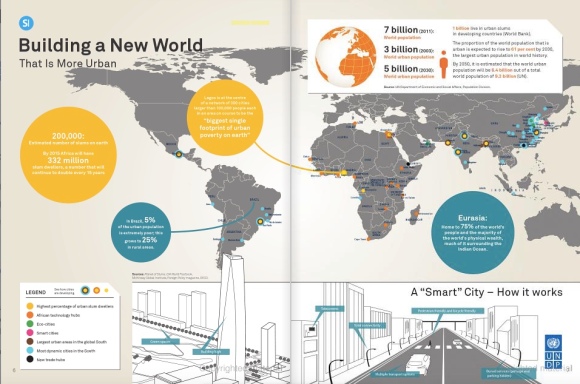By David South, Development Challenges, South-South Solutions

A Kenyan entrepreneur has cooked up a fuel-efficient stove and oven that uses less of a precious national resource: wood from trees.
Most African households using fuel-burning stoves either cannot afford clean-burning fuels like natural gas or electric stoves, or do not have access to them. They are stuck having to burn wood or other materials like animal dung – collectively called biomass – on open fires.
As well as using up wood and contributing to deforestation, there is another downside to these stoves. The use of polluting fuel-burning stoves by half the world’s population – including 80 percent of rural households – is a documented contributor to a host of health problems. Poor households not only have to contend with the ill health effects of dirty water and poor sanitation, the fumes from burning dung, wood, coal or crop leftovers lead to the global deaths of more than 1.6 million people a year from breathing toxic indoor air (WHO).
Two solutions in Kenya are helping people to cook more efficiently (meaning less time wasted on gathering material to burn, and less fuel used) and reducing cooking time by using heat more effectively.
Invented by Dr Maxwell Kinyanjui, the Kinyanjui Jiko is a fuel-efficient charcoal oven that comes in small, medium and large industrial sizes. Made entirely in Kenya, the ovens are custom designed for a variety of environments, from domestic household use and on-the-go safari models to high-capacity models for micro-enterprises and large institutions. Cooks can use the ovens to bake, toast, steam or boil. And they are 40 percent cheaper than cooking with electricity and between 15 and 20 percent cheaper than gas.
Kinyanjui’s Musaki Enterprises Ltd. (www.reskqu.blogspot.com/2009/01/arboretum-project.html) has developed a reputation for pioneering work in developing fuel-efficient stoves and ovens. Its most popular success to date has been the Kenya Ceramic Jiko (jiko is Swahili for cooker), or KCJ, a cheap, simple and effective stove. The company was set up in 1992, but has been involved in international aid-funded research and development efforts since the 1980s.
“My dad was on a very good team of highly motivated individuals in the early 80s who developed the stove through pragmatism, logic and good old-fashioned ingenuity,” said his son, Teddy Kinyanjui. “He then set up the independent Musaki Enterprises.”
The KCJ uses a ceramic liner placed inside a metal container. The metal is usually recycled, often taken from 55 gallon steel drums. The ceramic liner stops the heat energy from simply escaping into the environment and helps to focus the heat on cooking. Simply adding the ceramic liner reduces the stove’s fuel consumption by between 25 and 40 percent. The charcoal or wood sits in the ceramic basin and the burnt ash falls through holes in the bottom of the liner.
The stove design was a result of international and Kenyan cooperation, and has become popular in many African countries, including Uganda, Rwanda, Ethiopia, Malawi, Niger, Senegal and Sudan. It is used in 50 percent of urban homes in Kenya and 16 percent of rural homes.
Musaki Enterprises say the KCJ stoves on average save between 1 and 1.5 tons of CO2 per stove per year compared to other models. In supermarkets, the KCJs retail for around US $5 and the Kinyanjui Jiko ovens start at around US $100.
The deployment of the KCJ stoves has helped in slowing the deforestation of the country, but has not been able to bring it to a halt because of population growth and poor re-forestation efforts, says Teddy Kinyanjui.
“The lack of forward planning in tree planting is making firewood and charcoal harder and harder to obtain,” he said. “Fossil fuels are unavailable or unaffordable. Tree planting must begin now on a huge scale for people to continue cooking.”
Teddy won’t reveal how profitable the KCJ stoves have been, but says, “I wouldn’t have gone to school if they didn’t sell well.”
“Well, more and more people keep buying the damn things as fast as we can make them, so I think our customers like them,” he said. “They really all seem to like that the stoves cook really well for really cheap and are very high quality.”
Published: June 2009
Resources
- A list compiled by Columbia Business School for the Earth Institute of Kenyan renewable energy businesses. Website: http://lightingbop.blogspot.com/2007/02/renewable-energy-companies-in-kenya.html
- Hugh Allen, Kenya Ceramic Jiko: A Manual for Stove Makers. Website: http://styluspub.com/books/BookDetail.aspx?productID=44978
- Kammen, D. M. (2000), “Case Study #1: Research, development, and commercialization of the Kenya Ceramic Jiko (KCJ)”, in Methodological and Technological Issues in Technology Transfer (Cambridge University Press: New York, Cambridge UK and New York, NY), 383 – 384.
- More information on programmes in Kenya to improve stove energy efficiency.
Website: www.hedon.info/BP15:ImprovedStoveProgrammesInKenya
https://davidsouthconsulting.org/2021/02/20/baker-cookstoves-designing-for-the-african-customer/
https://davidsouthconsulting.org/2022/02/14/cleaner-stoves-to-reduce-global-warming/
https://davidsouthconsulting.org/2022/02/11/cooking-bag-helps-poor-households-save-time-money/
https://davidsouthconsulting.org/2022/02/15/innovative-stoves-to-help-the-poor/

Development Challenges, South-South Solutions was launched as an e-newsletter in 2006 by UNDP’s South-South Cooperation Unit (now the United Nations Office for South-South Cooperation) based in New York, USA. It led on profiling the rise of the global South as an economic powerhouse and was one of the first regular publications to champion the global South’s innovators, entrepreneurs, and pioneers. It tracked the key trends that are now so profoundly reshaping how development is seen and done. This includes the rapid take-up of mobile phones and information technology in the global South (as profiled in the first issue of magazine Southern Innovator), the move to becoming a majority urban world, a growing global innovator culture, and the plethora of solutions being developed in the global South to tackle its problems and improve living conditions and boost human development. The success of the e-newsletter led to the launch of the magazine Southern Innovator.


https://davidsouthconsulting.org/2021/03/05/southern-innovator-issue-5/

This work is licensed under a
Creative Commons Attribution-Noncommercial-No Derivative Works 3.0 License.
ORCID iD: https://orcid.org/0000-0001-5311-1052.
© David South Consulting 2022


















You must be logged in to post a comment.